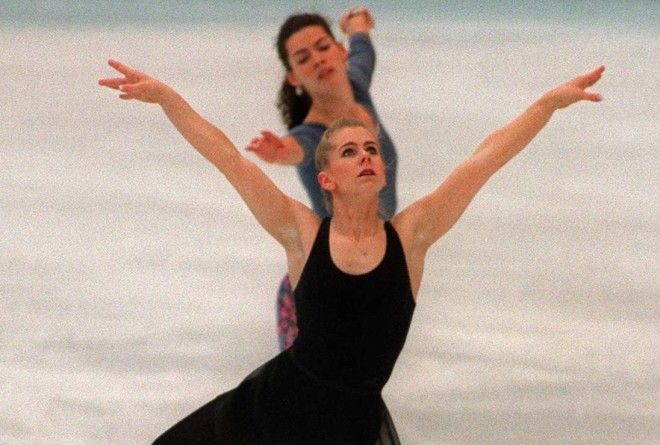Here are nine notable ones.
1. TONYA AND NANCY.
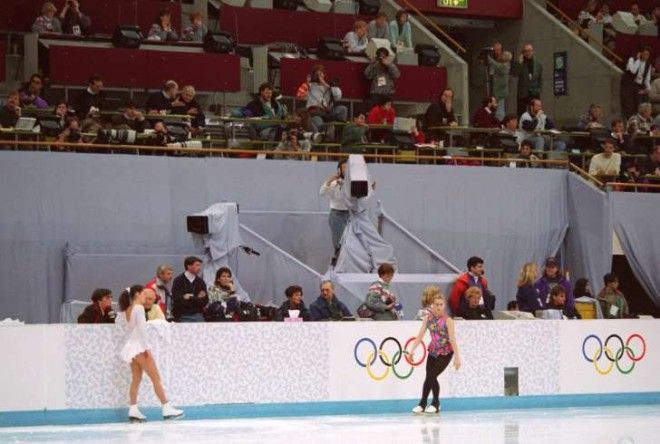
In 1994, a little club-and-run thrust the sport of figure skating into the spotlight. The assault on reigning national champion Nancy Kerrigan (and her subsequent anguished cries) at the 1994 U.S. National Figure Skating Championships in Detroit was heard round the world, as were the allegations that her main rival, Tonya Harding, may have been behind it all.
The story goes a little something like this: As America's sweetheart (Kerrigan) is preparing to compete for a spot on the U.S. Olympic team bound for Lillehammer, Norway, she gets clubbed in the knee outside the locker room after practice. Kerrigan is forced to withdraw from competition and Harding gets the gold. Details soon emerge that Harding's ex-husband, Jeff Gillooly, was behind the attack (he hired a hitman). Harding denies any knowledge or involvement, but tanks at the Olympics the following month. She then pleads guilty to hindering prosecution of Gillooly and his co-conspirators, bodyguard Shawn Eckhart and hitman Shane Stant. And then she's banned from figure skating for life.
Questions about Harding's guilt remain two decades later, and the event is still a topic of conversation today. Recently, both an ESPN 30 for 30documentary and the Oscar-nominated film I, Tonya revisited the saga, proving we can't get enough of a little figure skating scandal.
2. HAND-PICKED FOR GOLD.
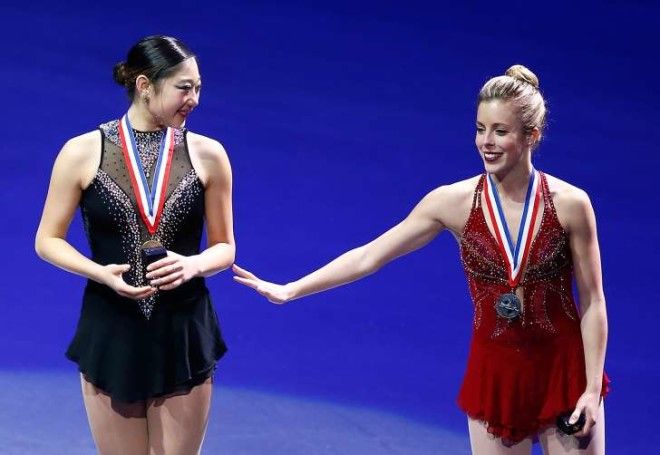
Usually it's the top three medalists at the U.S. Nationals that compete for America at the Winter Olympics every four years. But in 2014, gold medalist Gracie Gold (no pun intended), silver medalist Polina Edmunds, and ... "pewter" medalist Ashley Wagner were destined for Sochi.
What about the bronze medalist, you ask? Mirai Nagasu, despite out-skating Wagner by a landslide in Boston and despite being the only skater with prior Olympic experience (she placed fourth at Vancouver in 2010) had to watch it all on television. The decision by the country's governing body of figure skating (United States Figure Skating Association, or USFS) deeply divided the skating community as to whether it was the right choice to pass over Nagasu in favor of Wagner, who hadn't skated so great, and it put a global spotlight on the selection process.
In reality, the athletes that we send to the Olympics are not chosen solely on their performance at Nationals—it's one of many criteria taken into consideration, including performance in international competition over the previous year, difficulty of each skater's technical elements, and, to some degree, their marketability to a world audience. This has happened before to other skaters—most notably Michelle Kwan was relegated to being an alternate in 1994 after Nancy Kerrigan was granted a medical bye after the leg-clubbing heard round the world. Nagasu had the right to appeal the decision, and was encouraged to do so by mobs of angry skating fans, but she elected not to.
3. SALT LAKE CITY, 2002.
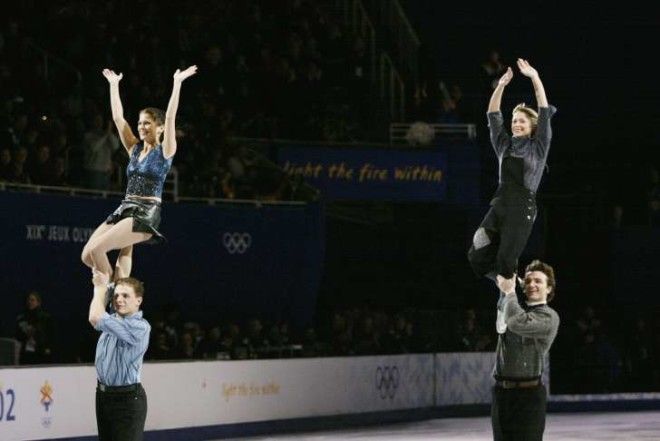
Objectively, this scandal rocked the skating world the hardest, because the end result was a shattering of the competitive sport's very structure. When Canadian pairs team Jamie Sale and David Pelletier found themselves in second place after a flawless freeskate at the Winter Olympics in Salt Lake, something wasn't right. The Russian team of Elena Berezhnaya and Anton Sikharulidze placed first, despite a technically flawed performance.
An investigation into the result revealed that judges had conspired to fix the results of the pairs and dance events—a French judge admitted to being pressured to vote for the Russian pair in exchange for a boost for the French dance team (who won that event). In the end, both pairs teams were awarded a gold medal, and the entire system of judging figure skating competition was thrown out and rebuilt.
4. AGENT OF STYLE.
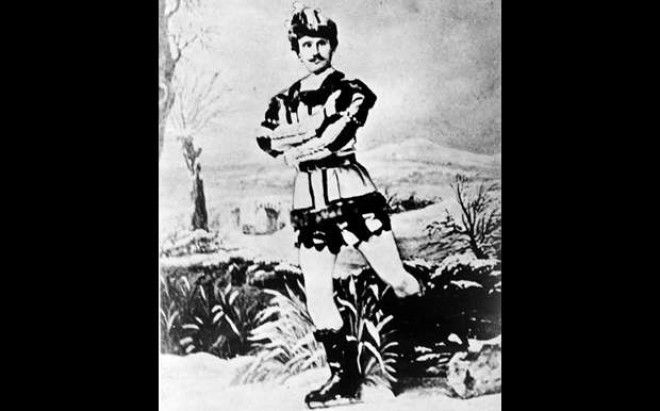
Jackson Haines was an American figure skater in the mid-1800s who had some crazy ideas about the sport. He had this absolutely ludicrous notion of skating to music (music!), waltzing on ice, as well as incorporating balletic movements, athletic jumps, and spins into competition. His brand new style of skating was in complete contrast to the rigid, traditional, and formal (read: awkward) standard of tracing figure-eights into the ice. Needless to say, it was not well received by the skating world in America, so he was forced to take his talents to the Old World.
His new “international style” did eventually catch on around the globe, and Haines is now hailed as the father of modern figure skating. He also invented the sit spin, a technical element now required in almost every level and discipline of the sport.
5. LADIES LAST.
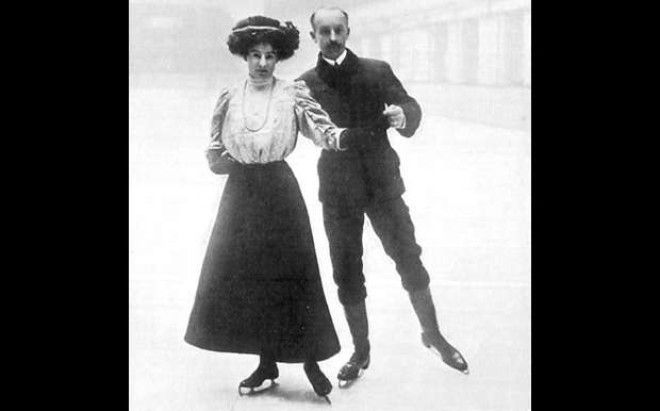
In 1902, competitive figure skating was a gentlemen's pursuit. Ladies simply didn't compete by themselves on the world stage (though they did compete in pairs events). But a British skater named Madge Syers flouted that standard, entering the World Figure Skating Championships in 1902. She ruffled a lot of feathers, but was ultimately allowed to compete and beat the pants off every man save one, earning the silver medal.
Her actions sparked a controversy that spurred the International Skating Union to create a separate competitive world event for women in 1906. Madge went on to win that twice, and became Olympic champion at the 1908 summer games in London—the first “winter” Olympics weren't held until 1924 in France, several years after Madge died in 1917.
6. AGENT OF STYLE, PART 2.
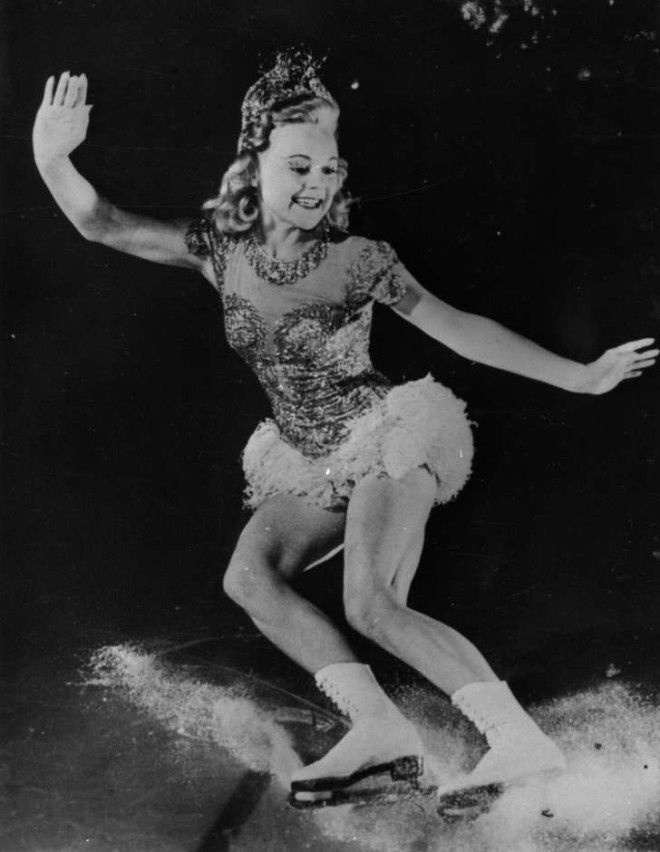
Norwegian skater Sonja Henie was the darling of the figure skating world in the first half of the 20th century. The flirtatious blonde was a three-time Olympic champion, a movie star, and the role model of countless aspiring skaters. She brought sexy back to skating—or rather, introduced it. She was the first skater to wear scandalously short skirts and white skates. Prior to her bold fashion choices, ladies wore black skates and long, conservative skirts. During WWII, a fabric shortage hiked up the skirts even further than Henie's typical length, and the ladies of figure skating have never looked back.
7. TOO SEXY FOR HER SKATES.
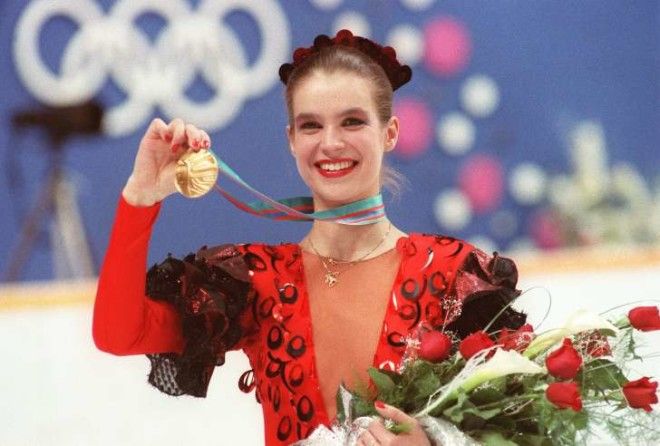
A buxom young beauty from the former Democratic German Republic dominated ladies figure skating in the mid- to late 1980s. A two-time Olympic champion, and one of the most decorated female skaters in history, Katarina Witt was just too sexy for her shirt—she tended to wear scandalously revealing costumes (one of which resulted in a wardrobe malfunction during a show), and was criticized for attempting to flirt with the judges to earn higher scores.
The ISU put the kibosh on the controversial outfits soon afterward, inserting a rule that all competitive female skaters “must not give the effect of excessive nudity inappropriate for an athletic sport.” The outrage forced Witt to add some fabric to her competitive outfits in the late '80s. But 10 years later she took it all off, posing naked for a 1998 issue of Playboy.
8. MORE COSTUME CONTROVERSY.
For the 2010 competitive year, the ISU's annual theme for the original dance segment (since defunct and replaced by the “short dance”) was “country/folk.” That meant competitors had to create a routine that explored some aspect of it, in both music and costume as well as in maneuvers. The top Russian pair chose to emulate Aboriginal tribal dancing in their program, decked in full bodysuits adorned with their interpretation of Aboriginal body paint (and a loincloth).
Their debut performance at the European Championships drew heavy criticism from Aboriginal groups in both Australia and Canada, who were greatly offended by the inaccuracy of the costumes and the routine. The Russian pair, Oksana Domnina and Maxim Shabalin, were quick to dial down the costumes and dial up the accuracy in time for the Winter Olympics in Vancouver, but the judges were not impressed. They ended up with the bronze, ending decades of Russian dominance in the discipline. (With the glaring exception of 2002, of course.)
9. IN MEMORIAM.
While not a scandal, this event bears mentioning because it has rocked the figure skating world arguably more than anything else. In February of 1961, the American figure skating team boarded a flight to Belgium from New York, en route to the World Championships in Prague. The plane went down mysteriously (cause still questioned today) as it tried to land in Brussels, killing all 72 passengers. America's top skaters and coaches had been aboard, including nine-time U.S. Champion and Olympic bronze medalist-turned-coach Maribel Vinson-Owen and her daughter Laurence Owen, a 16-year-old who had been heavily favored to win the ladies event that year.
